The science team includes a diverse set of scientists and watchstanders. Scientists on board have to make informed and sometimes crucial decisions about what locations and measurements will best answer the questions in which we are interested. They also process real-time data collected by the instrument teams and make initial interpretations of the results. Watchstanders are key to spotting errors or breaks in data as it is being recorded, and their stations are manned in shifts, 24 hours per day. They also help the scientists and technical teams deploy and retrieve instruments and process data.
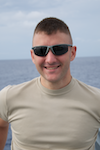
Thomas Bond
Kutztown University
Watchstander
Tom is an undergraduate sophomore from Hamburg, Pennsylvania, studying marine science with a concentration in biology at Kutztown University.
"Over recent years I have developed a growing affinity for marine environments, and this research project in the Western Pacific is an excellent way to further my love of the ocean with fellow researchers from across the country. It will be a great experience that will allow us to reveal more about Earth's history during the Middle Jurassic, possibly even for follow-on research. As well, this expedition will enable me to further my understanding and gain a better working knowledge of the equipment/methods involved in Marine Geophysical surveying."
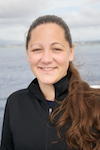
Rachel Gipe
Purdue University
Watchstander
Rachel is from Portland, Oregon, and completed her B.S. in environmental science at Juniata College, in Huntingdon, PA. She is now at Purdue University working with Dr. James Ogg on correlating terrestrial and ocean magnetic signatures during the Jurassic. On this cruise Rachel is a geophysical watchstander.
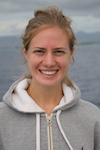
Christie Hegermiller
Boston College, Woods Hole Oceanographic Institution
Watchstander
Christie is from Long Island, New York, and got her B.S. in environmental geosciences from Boston College in 2011. She's a research assistant for Drs. Rocky Geyer and Jeff Donnelly at WHOI, focusing on physical and geological oceanography in coastal environments. After taking a marine geology class with Masako Tominaga at Boston College, she took the opportunity to be exposed to another oceanographic discipline through this research cruise.
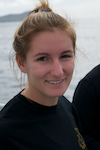
Jennifer Herting
Kutztown University
Watchstander
Jen is an undergraduate sophomore from Cinnaminson, New Jersey, studying marine science with a concentration in biology at Kutztown University.
"I’m excited to get the hands on experience of actually being out in the field and collecting real data that could be used for other research in the future."
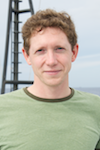
Dr. William Koeppen
Earth and Ecological Science Institute
Media/Outreach Coordinator
Will is a planetary scientist interested in the geology and geophysics of all of the inner planets. He has a diverse scientific background that includes investigating the mineralogy of Mars, monitoring active volcanoes, and developing algorithms to process and interpret satellite data. He is a jack of all trades. On this expedition Will is the coordinator of media and outreach, which means he is in charge of managing website content, design, and imagery as well as wrangling students to write daily blogs.
"I'm interested in lots of different things so when this opportunity arose I jumped at it. This expedition combines my interests in design, photography, and education with my scientific interests concerning the history of Earth."
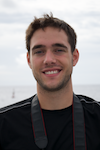
Nicholas Mathews
Kutztown University
Watchstander
Nick is an undergraduate junior from Reading, Pennsylvania, studying marine science with a concentration in physics at Kutztown University.
"I am so appreciative that I will get to work with passionate scientists from all over the country on this research expedition, because practically all of my schooling thus far has been confined to inside ‘the classroom’. This opportunity is unprecedented for Kutztown University and will be a great help towards potentially getting me into grad schools or marine physics careers. It will be my first open ocean research cruise and the first time that I get to see the Pacific Ocean. I have always loved the ocean, and hopefully this highly anticipated experience on the Thomas G. Thompson sheds lots of light on future career paths for me."
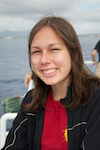
Danielle Moyer
Kutztown University
Watchstander
Dani is an undergraduate freshman from Mertztown, Pennsylvania, studying geology at Kutztown University. This is her first research experience, and she hopes to continue working and traveling to new areas in the field of geology.
"I still can not believe that I have been given an amazing oppurtunity to work with scientists from all over the country on this research expedition, especially as a freshman. I am honored, excitied, and nervous all at once since this will be my first time as an undergraduate researcher, my first time on a ship, as well as my first time being so far away from my little town of Mertztown. This expedition will be an amazing learning experience and I can't wait to get to work!"
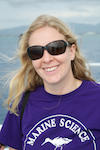
Dr. Adrienne Oakley
Kutztown University
Marine Geophysical Lead
Adrienne is a Co-Principal Investigator on the JOCMS, and she is in charge of geophysical watchstanders and seismic data collection and interpretation while on board the R/V Thompson. Adrienne studies marine geology and marine geophysics in deep ocean basins and coastal zones. She teaches introductory and advanced courses in geology and marine science at Kutztown University. This is her seventh research cruise representing many months at sea.
"I was 18 years old on my first research cruise and was hooked. After that experience, I knew I wanted to study marine geology in the deep ocean. Now that I am a professor, I'm thrilled to have the opportunity to introduce my undergraduate students to cutting-edge oceanographic research at sea."
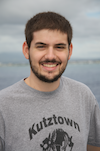
Matthew Sabetta
Kutztown University
Watchstander
Matt is an undergraduate senior from West Pittston, Pennsylvania, studying geology at Kutztown University. He's interested in geophysics and GIS mapping, and he spent the 2011 summer in Alaska working with Full Metal Minerals exploring for economic ore bodies.
"I am most excited to be working with scientific equipment that I do not have the opportunity to be exposed to during school, and I am also excited to interact with the scientists that oversee and run the equipment. I am most nervous about spending 42 days at sea without being able to see land."
Dr. William Sager
Texas A&M
Co-Investigator
Will is a professor at Texas A&M University and a co-investigator on the JOCMS project, but unfortunately he was unable to go with us to sea. He has collaborated with Maurice Tivey since 1992 on deep-towed magnetic investigations of Jurassic ocean crust, and mentored Masako Tominaga throughout her graduate education.
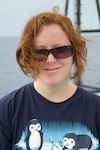
Ashley Stinson
University of Maine
Watchstander
Ashley is from Bangor, Maine and got her B.S. in earth science and B. A. in anthropology from the University of Maine Orono. She recently moved to Austin, Texas, and is applying to graduate programs in Australia or the United States. She's been at sea twice before on the R/V Argo Maine and the R/V Knorr, and she responded to a call for watchstanders for this cruise on the UNOLS website.
"I enjoy frequenting the ocean because I'm interested in learning about all the different marine technologies that scientists have at their disposal. It's an exciting and fast-paced environment and significantly more eventful than being on land."
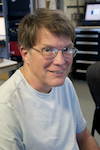
Dr. Stephen Swift
Woods Hole Oceanographic Institution
Sedimentologist/Sonobuoys
Steve wears a lot of different scientific hats. He is a sedimentologist, geophysicist, and oceanographer at WHOI, and he has worked on everything from continental margin sea floor sediments and stratigraphy to ocean crustal velocity structure to water mass circulation in the Middle East basins. On this cruise, he's in charge of planning the seismic refraction survey and deploying sonobuoys to collect refraction data.
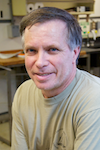
Dr. Maurice Tivey
Woods Hole Oceanographic Institution
Co-chief Scientist
This is Maurice's 40th cruise since 1980, and this is his third expedition to the Jurassic Quiet Zone. His specialty is making and interpreting high-resolution magnetic measurements of the seafloor using ship-towed magnetometers, submersibles such as Alvin and Nautile, and remotely operated vehicles like Jason and ISIS. Now he's utilizing magnetometers on autonomous vehicles to study the oldest crust in the ocean.
"Since this has been such a long term process, it's been fun to follow through on this research to the JQZ with Masako."
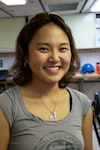
Dr. Masako Tominaga
Woods Hole Oceanographic Institution
Chief Scientist
Masako is a marine geophysicist who began her marine science career as a graduate student on an expedition to the Jurassic Quiet Zone in 2002. That trip was also on the R/V Thomas G. Thompson, with Maurice Tivey serving as the chief scientist. Since then, she has logged more than 400 days at sea including five Integrated Ocean Drilling Program expeditions. For this project, she serves as the chief scientist and is responsible for critical decisions concerning the science direction of the cruise.
"It is my honor to be back on the R/V Thompson as a chief scientist. Maurice Tivey's mentorship has been leading me in this direction since 2002. My exposure to field oceanography was instrumental in jump-starting my career, and I'm happy to be providing the same opportunity for the next generation of young scientists."

Jinchang (Sam) Zhang
Texas A&M
Seismic data processing
Sam is from Zhaoqing, China, working towards his PhD in oceanography at Texas A&M University with Dr. William Sager. He's interested in marine geology and geophysics, and works on projects related to the Shatsky Rise in the Western Pacific Ocean. When he's not crushing his opponents at the ping-pong table, he processes our multichannel seismic data.
